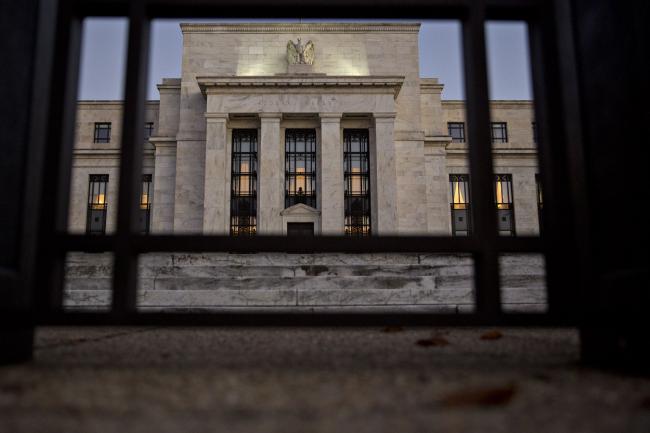(Bloomberg) -- It looks like the U.S. Treasury market has goaded the Federal Reserve into shifting gears on interest rates, to consider the first reduction in more than a decade. Now, the world’s biggest bond market has further marching orders for Chairman Jerome Powell and his colleagues: Don’t dawdle on those cuts.
The Fed on Wednesday scrapped its use of “patient” in describing its approach to policy changes, roughly three months after bond markets began clamoring for lower borrowing costs. Eight of 17 Fed officials forecast a cut by the end of the year as the Federal Open Market Committee took note of greater economic uncertainties.
In the aftermath, traders have pushed markets to levels suggesting a quick Fed response, quite possibly at the next FOMC meeting in July. Derivatives markets are pricing in more than 25 basis points of easing at the gathering. As yields on two-year Treasuries sank to a more than 18-month low of 1.7% on Thursday, the spread between those securities and 10-year notes widened toward the steepest levels this year. The Bloomberg Dollar Spot Index sank to the lowest in almost three months.
And so it appears jawboning about being ready to cut rates won’t be enough. Only actual Fed easing will quell the $16 trillion Treasury market.
“The market is pricing this in and just asking for more now,” said John Briggs, head of strategy for the Americas at NatWest Markets. “If half the FOMC members thought it was necessary for a cut, then why didn’t they just go today and own the narrative. The Fed will have to end up following the markets.”
The rate implied for the July 31 Fed decision has dropped to about 2.03%. That suggests more than 30 basis points of rate cuts by then. The January 2020 fed funds futures contract suggests about 75 basis points of easing by the end of 2019.
In another sign traders may be pricing in rate cuts, the three-month dollar Libor rate fell on Thursday by the most since 2009.
Fed officials were starkly divided on the path for policy. Eight predicted a rate reduction in 2019, another eight saw no change and one forecast a hike, according to updated quarterly forecasts. The FOMC vote to keep the rate benchmark steady at 2.25% to 2.50% on Wednesday was not unanimous either, with St. Louis Fed President James Bullard seeking a quarter-point rate cut. His vote marked the first dissent of Powell’s 16-month tenure as chairman.
Not everyone is convinced that the Fed will actually announce a reduction next month. News could break between now and then on the trade-war front, for instance. Or maybe something else will emerge from the Group-of-20 meeting later this month that helps improve the global economic growth outlook.
But for now, the market is making its preference clear.
Some eurodollar options traders are already moving toward the possibility that the Fed will cut by 50 basis points next month. NatWest’s economics team is a believer in the quick-cut thesis. They’ve been predicting two 2019 rate reductions, one in September and another in November, but just brought that closer to the present, now forecasting cuts in July and September.
(Adds Libor rate decline.)
